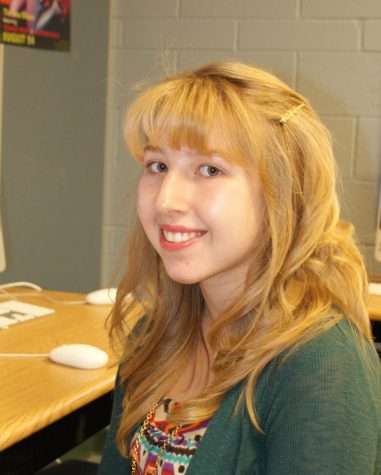Dia de los Muertos is celebrated by Mexicans and Mexican-Americans throughout Mexico, Canada, and the United States every year from October 31 to November 2. The Day of the Dead is a time to remember and celebrate those who have died.
The Spanish Club celebrated Dia de los Muertos, or the Day of the Dead, on October 26, 2010. The purpose of Spanish Club is to learn as much as you can about the cultures of Spanish-speaking countries, but the main objective is to, “have fun,” said adviser, Ms. Amy Murray. The Spanish Club certainly had “fun” while learning about a holiday intricately connected to one of the most well-know Spanish speaking countries: Mexico.
The Spanish Club learned that in Mexico people decorate the streets near cemeteries with decorations of papel picado (decoratively cut paper), flowers, and candy “Calaveras”. Calaveras are sugar skulls decorated with frosting and colored tin foil. The Spanish Club celebrated by making similar, non-edible versions using sequins and glitter glue. Families often make alters; including food offerings in the shape of skulls, candles, incense, flowers, and a photo of the diseased.
Not all Mexican-Americans celebrate the Day of the Dead, but there are many who do despite the cultural differences in Canada and the United States. Yarima Rodriguez, a sophomore, whose parents are from Mexico, said that she “doesn’t really celebrate it here,” but she participates in the celebration when she visits her family in Mexico.
“We have a feast, and all the kids eat their little candy skulls,” she said, recalling childhood celebrations of the Day of the Dead. She celebrates it not necessarily because she believes in it, but because, “it’s a family tradition.”
One of the most commonly discussed aspects of the Day of the Dead is the unique Mexican viewpoint on death. In contrast to the common attitude towards death in the United States, Mexicans react to death with mourning as well as joy. They have the same fear of death as in other cultures, but instead of “respecting’’ it as people do in American culture, they reflect their fear by mocking death. Their mocking even goes as far as children’s games such as “funeral” when they play with toy coffins and undertaker figurines.
“Instead of being scared, it’s easier to laugh at it,” said junior Nate Hughes.
People cope with pain in many different ways, and instead of “shutting down,” as Chloe Tschogl said, “they have fun knowing [the dead] are going to a better place.”
Spanish Club cooks, dances, and does art projects to learn more about the cultures of other countries like they did with the Day of the Dead; and they already have about ten regularly attending members. “We are always looking for those who are interested. You do not have to be enrolled in Spanish to attend Spanish Club nor pay any fee. Anyone who is interested should definitely come to a meeting,” Ms. Murray said. Meetings are held every Tuesday at 1:30 in room 801.






